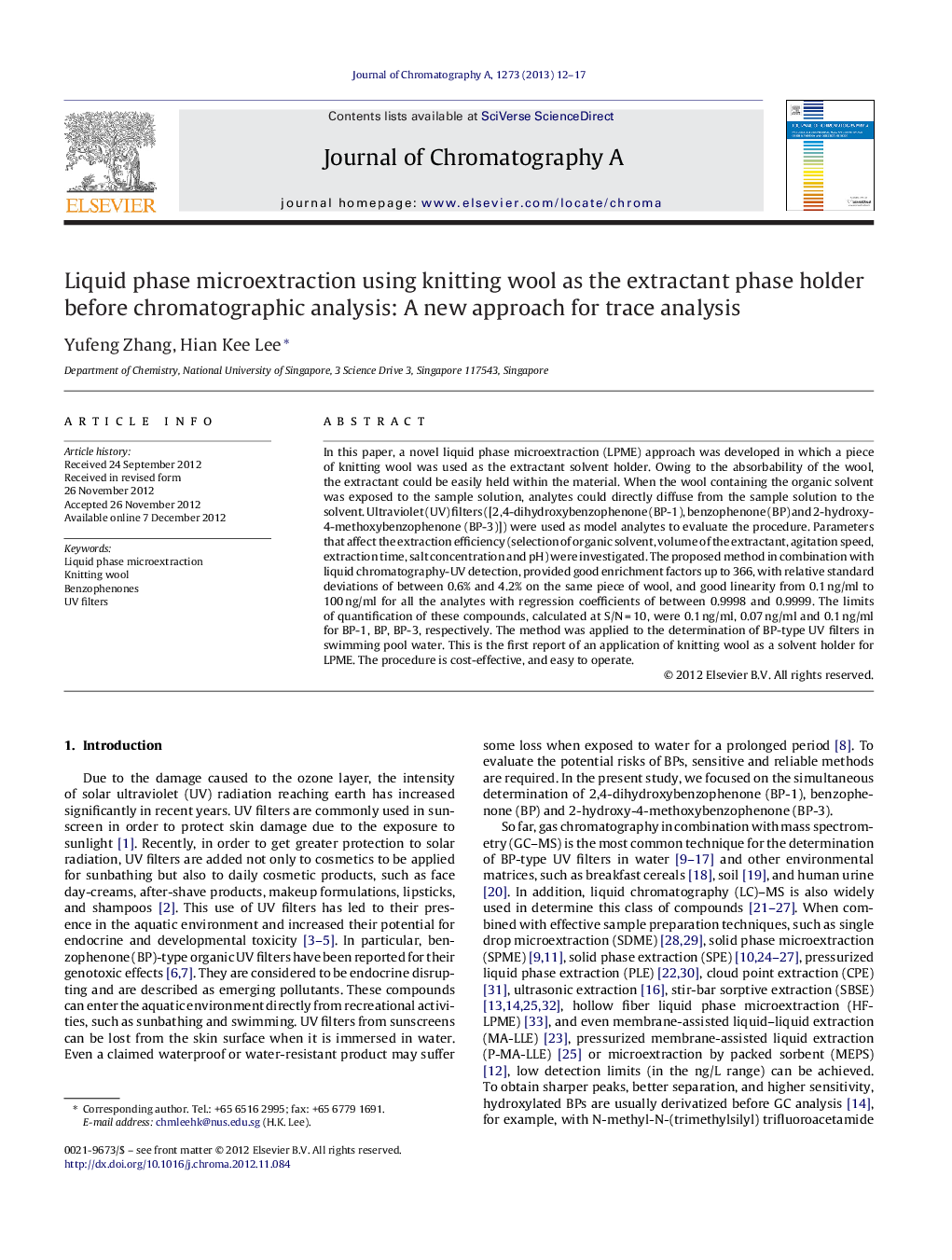| کد مقاله | کد نشریه | سال انتشار | مقاله انگلیسی | نسخه تمام متن |
|---|---|---|---|---|
| 1205019 | 1493653 | 2013 | 6 صفحه PDF | دانلود رایگان |

In this paper, a novel liquid phase microextraction (LPME) approach was developed in which a piece of knitting wool was used as the extractant solvent holder. Owing to the absorbability of the wool, the extractant could be easily held within the material. When the wool containing the organic solvent was exposed to the sample solution, analytes could directly diffuse from the sample solution to the solvent. Ultraviolet (UV) filters ([2,4-dihydroxybenzophenone (BP-1), benzophenone (BP) and 2-hydroxy-4-methoxybenzophenone (BP-3)]) were used as model analytes to evaluate the procedure. Parameters that affect the extraction efficiency (selection of organic solvent, volume of the extractant, agitation speed, extraction time, salt concentration and pH) were investigated. The proposed method in combination with liquid chromatography-UV detection, provided good enrichment factors up to 366, with relative standard deviations of between 0.6% and 4.2% on the same piece of wool, and good linearity from 0.1 ng/ml to 100 ng/ml for all the analytes with regression coefficients of between 0.9998 and 0.9999. The limits of quantification of these compounds, calculated at S/N = 10, were 0.1 ng/ml, 0.07 ng/ml and 0.1 ng/ml for BP-1, BP, BP-3, respectively. The method was applied to the determination of BP-type UV filters in swimming pool water. This is the first report of an application of knitting wool as a solvent holder for LPME. The procedure is cost-effective, and easy to operate.
► A novel LPME procedure using knitting wool as solvent holder.
► High extraction efficiency with good enrichment factors up to 366 were achieved.
► The new method can sustain high agitation speed and long extraction time.
► Simple and cost-effective method with low LODs, good repeatability and linearity.
Journal: Journal of Chromatography A - Volume 1273, 18 January 2013, Pages 12–17